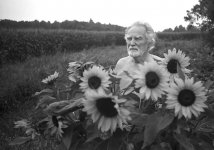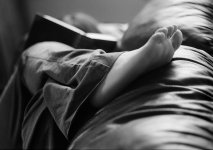By scanning directly into Photoshop, you avoid to save the image to a file before editing it. If you work in JPEG, it is important to streamline your workflow, because JPEG is not a lossless format. That means that every time you save an image to a file in JPEG format and then open it again, you degrade the quality a little bit (depending on your "JPEG Quality" setting).
I second TimBonzi's suggestion to switch to the "Advanced" mode for more options. For B&W negs, use B&W setting as Roland suggested and, even better, the "B&W 16 bits" setting. If I remember correctly (I am not at home now), you have to allow for 16 bits scanning in the "Options" dialog box first. You will get twice the dynamic range in 16 bits compared to 8 bits. This will allow you to tweak the image a lot further (for example to correct the exposure) without degrading it.
Cheers,
Abbazz





